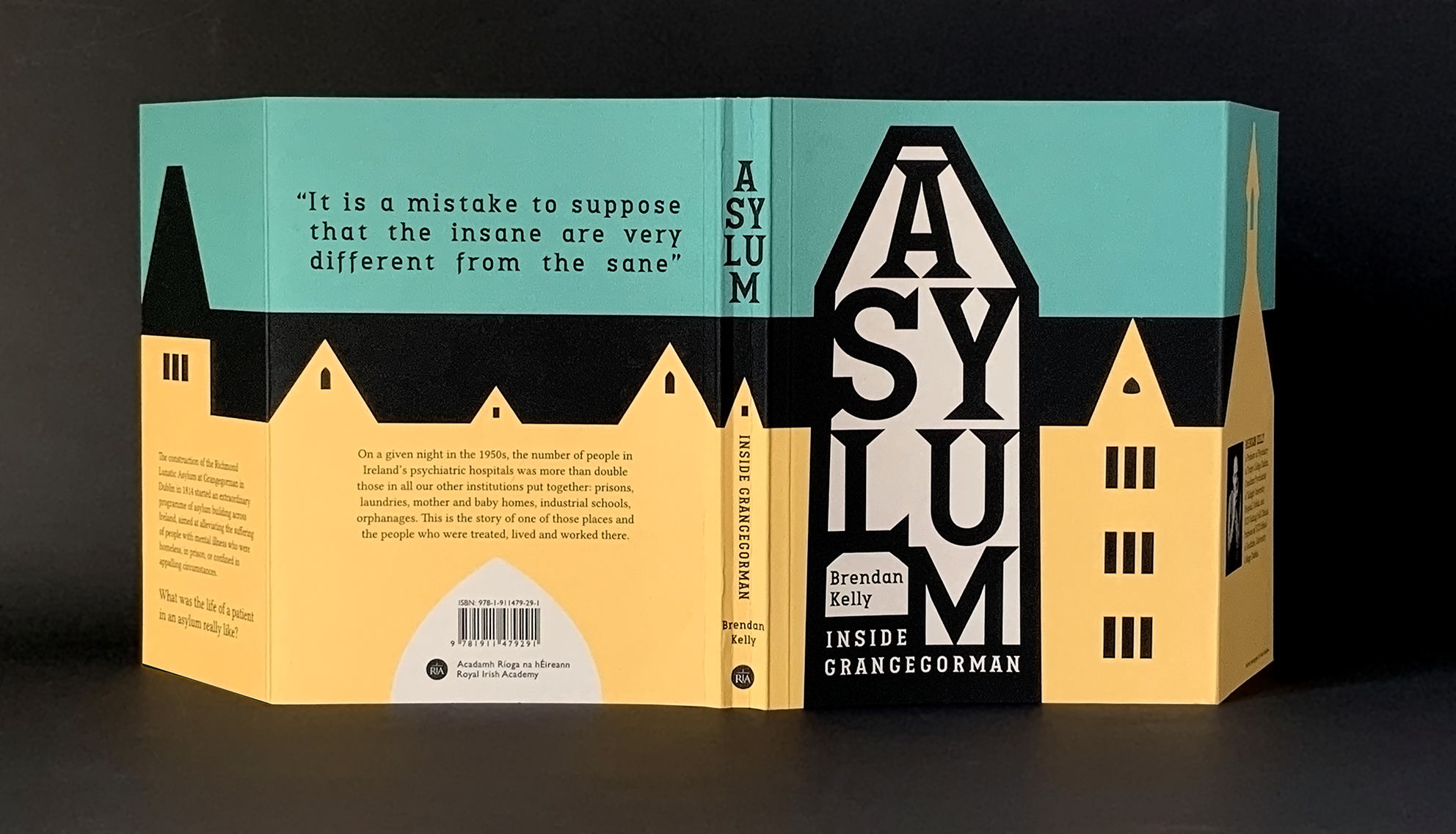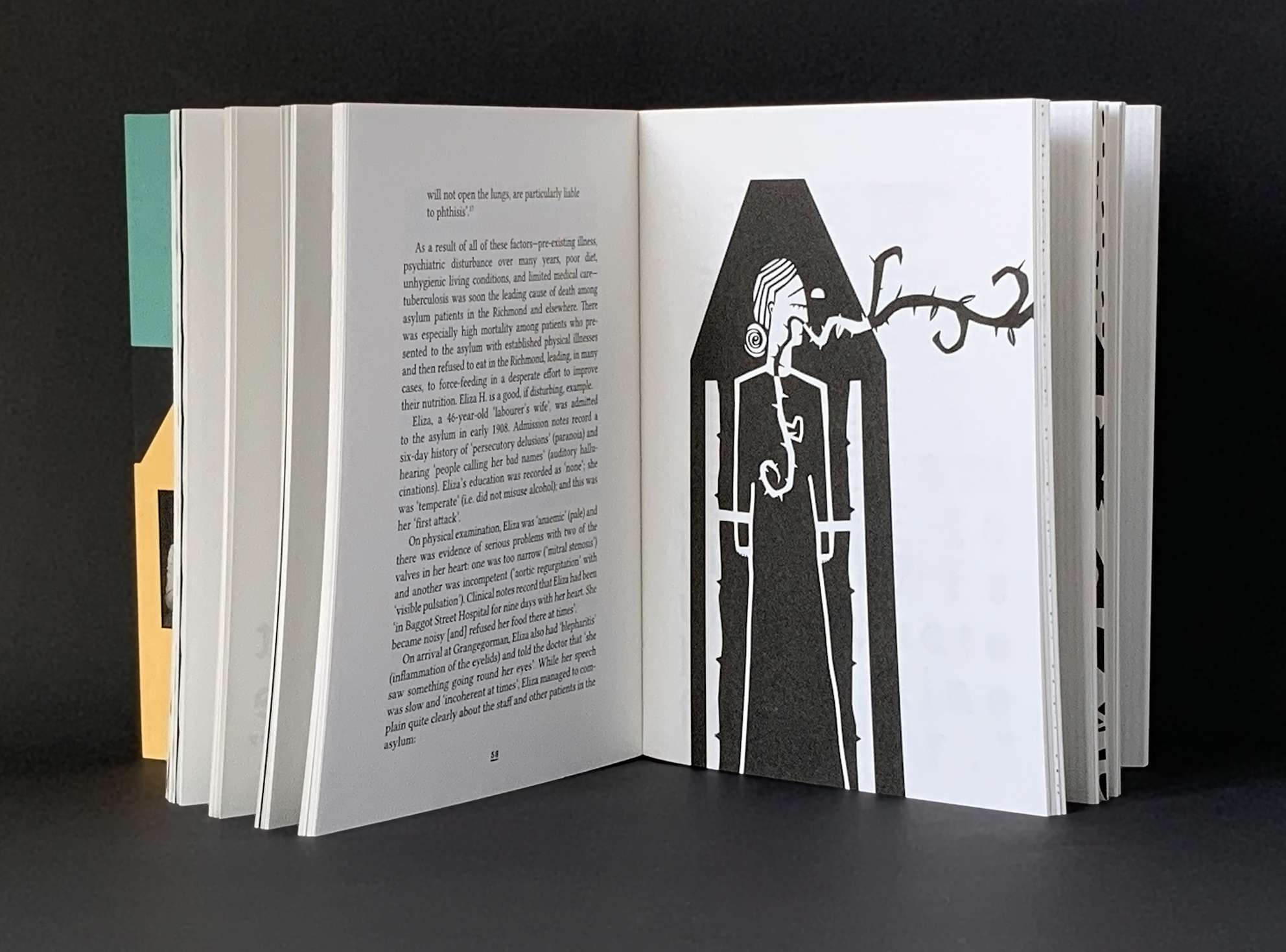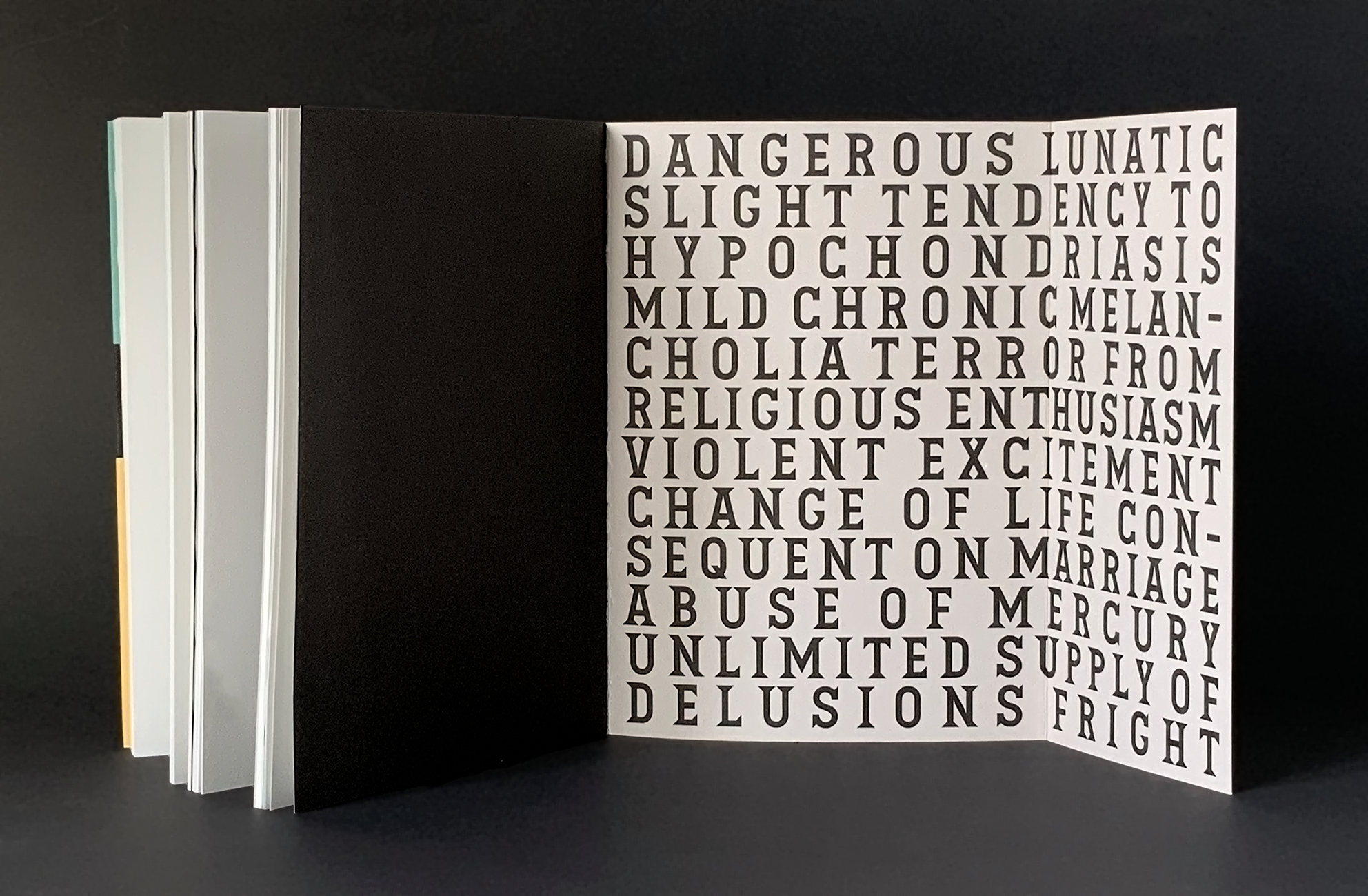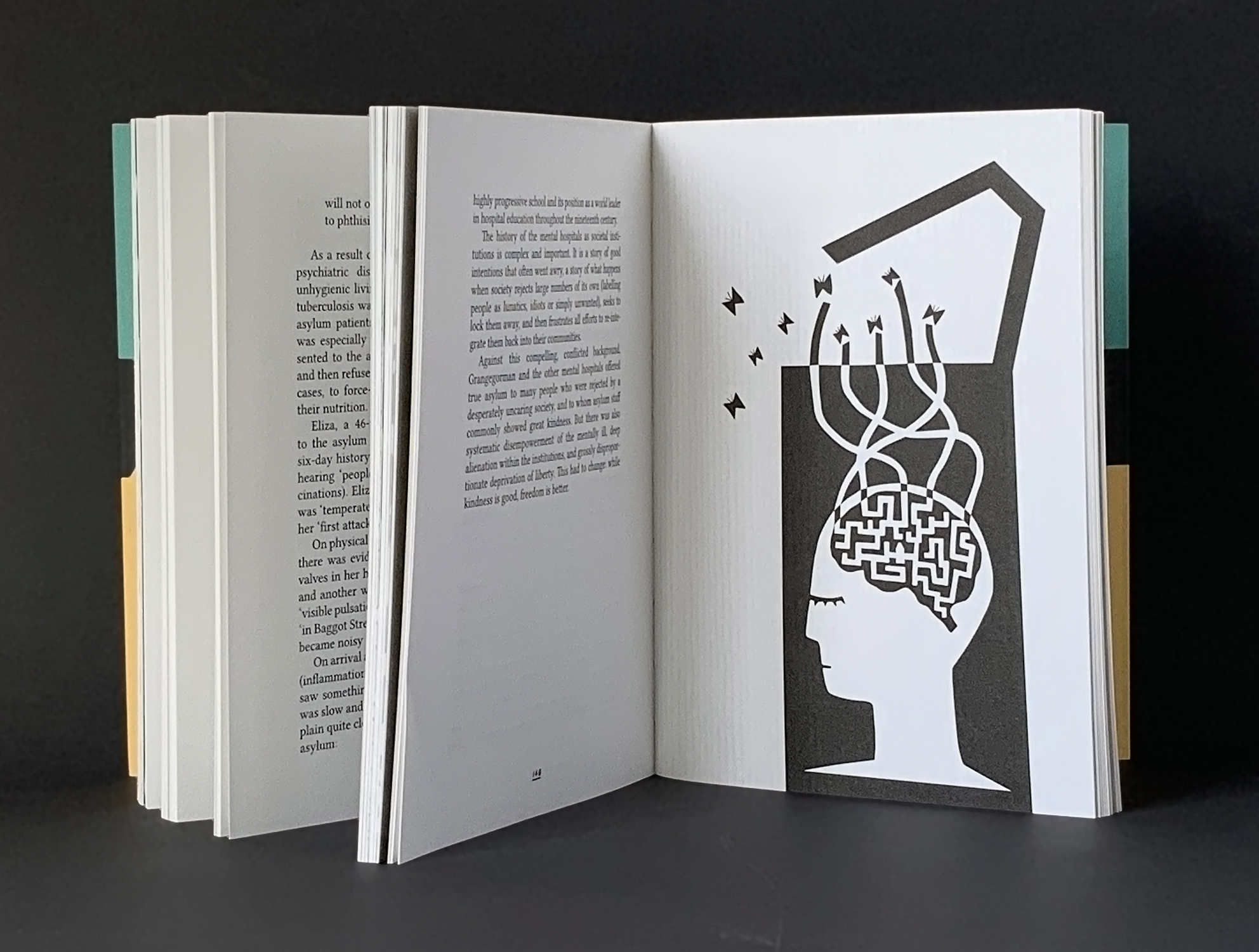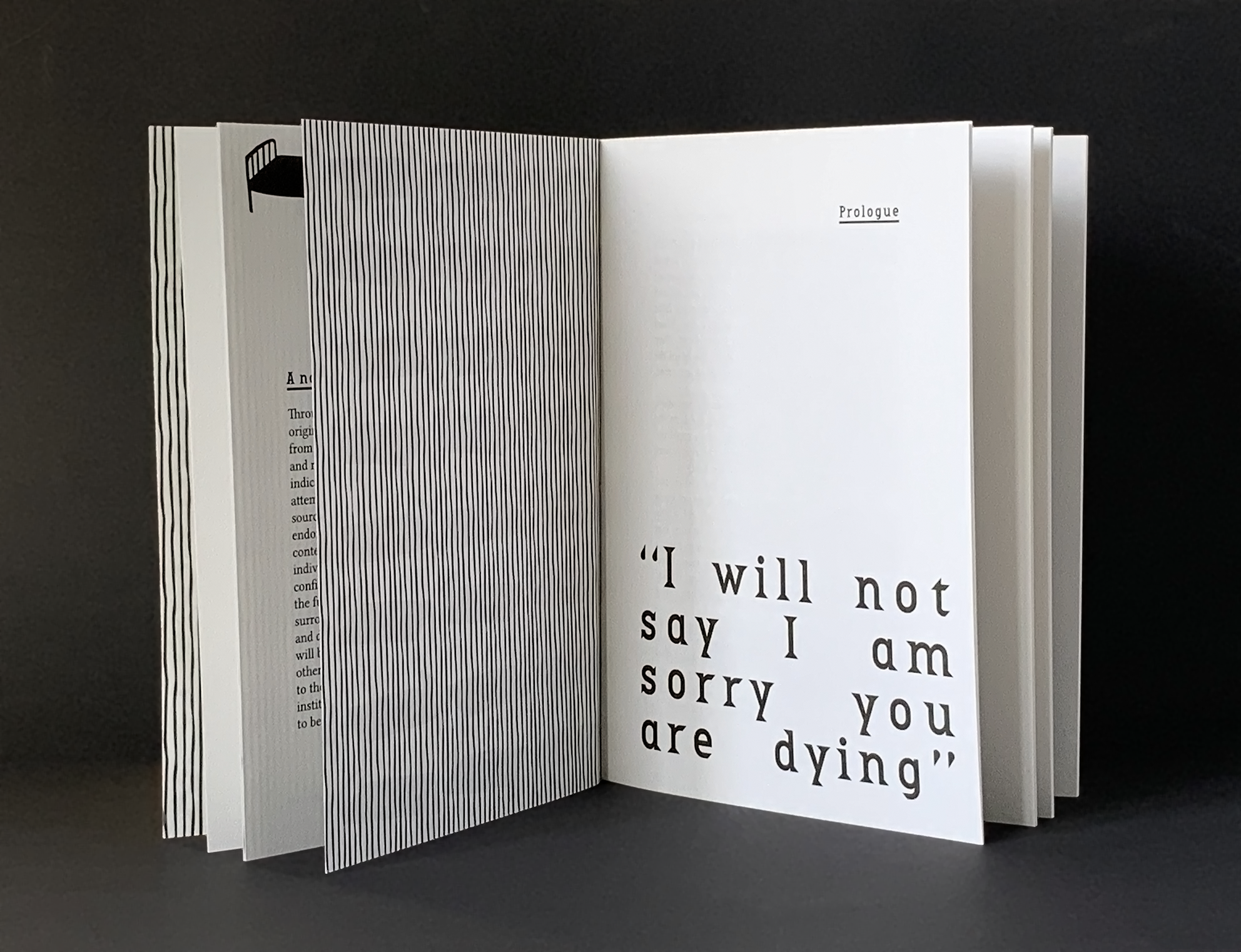Asylum: Inside Grangegorman
Designed by Fidelma Slattery
Illustration: Fidelma Slattery
Project lead; Founder, Grangegorman Histories: Ruth Hegarty
Author: Brendan Kelly
Printer: Agata Kusion, L&C Printing Group
Categories: Printed Publication
Industry: Education
Tags: Illustration / Typography / Art direction / Publishing
For 250 years, Grangegorman in Dublin has been the site of a series of oppressive institutions - a workhouse, a cholera hospital, a prison for women and children sentenced to transportation to Tasmania. But most famous, and notorious, was the psychiatric hospital, originally known as the Richmond Lunatic Asylum. This book, Asylum: Inside Grangegorman, was commissioned from psychiatrist Brendan Kelly to tell the stories of patients, as discovered in the hospital's archives.
The design brief was to design and illustrate the book to best present it as an accessible, engaging read to a general public – a book that would humanise a difficult subject and bring dignity to those who suffered in Grangegorman while respecting their anonymity.
The design process focused on the voices and experiences of the patients. The cover uses silhouettes of historical buildings in the Grangegorman site, emphasising confinement. The tall-house shape that contains the title is based on a section of the building that housed the male dormitories. This shape is carried throughout the book and forms the basis of each illustration, in order to give a sense of the overcrowded and overwhelming conditions the patients found themselves in.
Twelve black-and-white illustrations, one for each chapter, were created, representing individual case histories as described in the doctors' notes and patients' own words.
The opening page and the entire inside back cover are filled entirely with words from the hospital's archives, taken from the case studies in the book. These document the symptoms and reasons for admission of the patients, highlighting how much of this language and many of the symptoms would no longer be considered appropriate or evidence of psychiatric illness.
The opening pages of each chapter were created from a line of text within the chapter – each being a quote from a patient or doctor. Bobik Serif typeface, by Lewis McGuffie, gives impact, clarity and power to the words. The negative spaces created by the type echo the rooflines and building shapes that can still be seen around the Grangegorman site today.
This was sensitive and sometimes disturbing and upsetting material to work on, and capturing it in design was extremely challenging. But as the author Brendan Kelly says, “despite their complexities – or more likely because of them – the buried stories of the Irish asylum patients need to be unearthed and told”.
Asylum: Inside Grangegorman was commissioned as part of a public history programme being led by the Grangegorman Development Agency and the Royal Irish Academy.
